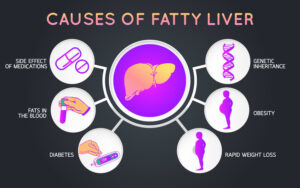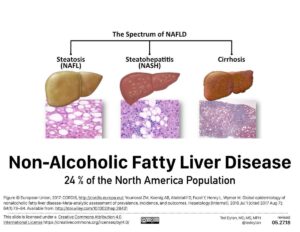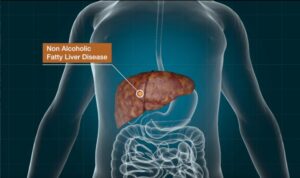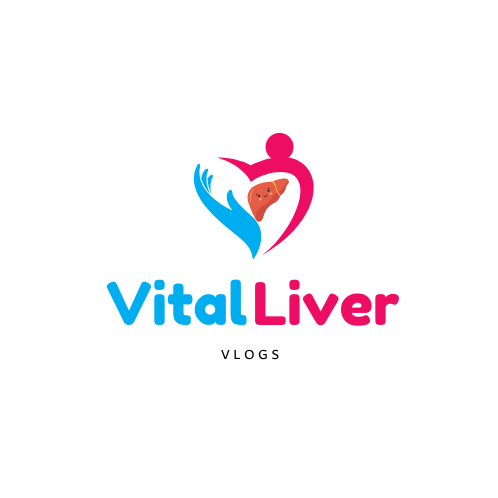- Introduction to NAFLD
- The growing prevalence of NAFLD
- Why is NAFLD important to address?
H2: What is Non-Alcoholic Fatty Liver Disease?
- NAFLD Definition
- Difference between NAFLD and Alcohol-Related Fatty Liver Disease
- Types of NAFLD: Simple Fatty Liver vs. Non-Alcoholic Steatohepatitis (NASH)
H2: Causes of NAFLD
- Insulin resistance and metabolic syndrome
- Obesity and overweight
- Poor dietary habits
- Sedentary lifestyle
- Genetics and family history
H2: Symptoms and Diagnosis of NAFLD
- Early symptoms (or lack thereof)
- How doctors diagnose NAFLD: Imaging and blood tests
- Advanced NAFLD symptoms: Liver fibrosis, cirrhosis
H3: Risk Factors for Developing NAFLD
- Age and gender
- Diabetes and insulin resistance
- High cholesterol levels
- Rapid weight loss
H2: Complications of NAFLD
- Progression to liver fibrosis and cirrhosis
- Liver cancer risk
- Impact on cardiovascular health
- Connection with type 2 diabetes
H2: Preventing Non-Alcoholic Fatty Liver Disease
- Importance of a balanced diet
- Role of regular physical activity
- Maintaining a healthy weight
- Managing conditions like diabetes and cholesterol
H2: Diet Recommendations for NAFLD
- Foods to avoid: Processed, sugary, and fatty foods
- Foods to include: Fruits, vegetables, and lean proteins
- The Mediterranean diet and its benefits for NAFLD
H2: Exercise and Lifestyle Changes for Managing NAFLD
- The importance of physical activity
- Types of exercises recommended for NAFLD
- Reducing stress for liver health
H2: Medical Treatments for NAFLD
- Medications under research
- Role of Vitamin E and other supplements
- Bariatric surgery for severe cases
H3: Emerging Research and Therapies
- Breakthroughs in NAFLD treatment
- Gene therapies and advanced drugs in the pipeline
H2: Living with NAFLD: Tips and Support
- How to cope with a NAFLD diagnosis
- Support groups and counseling
- Managing mental health and well-being
H2: Frequently Asked Questions (FAQs) about NAFLD
- Is NAFLD reversible?
- Can NAFLD progress to liver failure?
- What foods should I avoid with NAFLD?
- How often should I be tested for NAFLD?
- Does NAFLD always lead to cirrhosis?
H2: Conclusion
- Summary of key points
- The importance of lifestyle changes in preventing and managing NAFLD
Understanding Non-Alcoholic Fatty Liver Disease (NAFLD)
Non-Alcoholic Fatty Liver Disease (NAFLD) is becoming a significant health concern globally. With more and more people being diagnosed every year, it’s important to understand what this condition is, what causes it, and how it can be prevented. Whether you are diagnosed with NAFLD or want to learn more to keep your liver healthy, this article covers all the details.
What is Non-Alcoholic Fatty Liver Disease?
NAFLD is a condition where excess fat builds up in the liver without the influence of alcohol. Unlike alcohol-related liver disease, this buildup occurs in people who drink little to no alcohol. It is a progressive disease that can range from a simple fatty liver, where there’s minimal inflammation, to a more severe form called Non-Alcoholic Steatohepatitis (NASH). NASH can lead to scarring of the liver, liver failure, or liver cancer if not managed in time.
Causes of NAFLD
There are various causes of NAFLD, many of which are linked to lifestyle and metabolic factors.
- Insulin Resistance and Metabolic Syndrome: People with insulin resistance, a precursor to type 2 diabetes, often have NAFLD as well. Metabolic syndrome, which includes a cluster of conditions like high blood pressure, high blood sugar, and abnormal cholesterol levels, is one of the leading causes.
- Obesity and Overweight: Being overweight is a major risk factor for NAFLD. Studies show that up to 80% of people with obesity also have some degree of fatty liver.
- Poor Dietary Habits: Diets high in sugars, unhealthy fats, and processed foods are known contributors to the development of NAFLD.
- Sedentary Lifestyle: Lack of physical activity is a significant contributor to fat accumulation in the liver.
- Genetics and Family History: There is evidence suggesting that people with a family history of liver disease are at a higher risk of developing NAFLD.
Symptoms and Diagnosis of NAFLD
NAFLD is often called a “silent” disease because many people have no symptoms in the early stages. As the disease progresses, you may experience:
- Fatigue
- Weakness
- Mild pain or discomfort in the upper right side of the abdomen

However, these symptoms are non-specific, and many people remain unaware they have the disease until it has progressed. Doctors use blood tests, ultrasounds, and sometimes a liver biopsy to diagnose NAFLD.
Risk Factors for Developing NAFLD
Several factors increase the likelihood of developing NAFLD:
- Age and Gender: People over the age of 50 and men tend to have a higher risk.
- Diabetes and Insulin Resistance: Those with type 2 diabetes or prediabetes are more likely to develop NAFLD.
- High Cholesterol Levels: High levels of bad cholesterol (LDL) and triglycerides are linked to NAFLD.
- Rapid Weight Loss: Surprisingly, rapid weight loss can also lead to NAFLD due to the quick mobilization of fats from other parts of the body into the liver.
Complications of NAFLD
Without proper intervention, NAFLD can progress into more severe conditions such as:
- Liver Fibrosis and Cirrhosis: Long-term inflammation can cause liver scarring (fibrosis), which, if left untreated, can turn into cirrhosis, a life-threatening condition.
- Liver Cancer: NAFLD significantly increases the risk of liver cancer.
- Cardiovascular Health Issues: People with NAFLD are at an increased risk of heart disease and stroke due to associated conditions like high cholesterol and hypertension.
- Connection with Type 2 Diabetes: NAFLD and type 2 diabetes often go hand in hand, making management of both conditions crucial.
Preventing Non-Alcoholic Fatty Liver Disease
While NAFLD is a serious condition, it can be prevented by making healthy lifestyle choices:
- Balanced Diet: A diet low in sugar, unhealthy fats, and refined carbs can help reduce fat buildup in the liver.
- Regular Physical Activity: Engaging in at least 150 minutes of moderate-intensity aerobic exercise per week can help prevent fat accumulation.
- Maintaining a Healthy Weight: Managing weight through a combination of diet and exercise is essential.
- Managing Underlying Conditions: If you have diabetes or high cholesterol, keeping these conditions under control is crucial in preventing NAFLD.
Diet Recommendations for NAFLD
Your diet plays a significant role in managing and even reversing NAFLD. Key dietary tips include:
- Foods to Avoid: Processed foods, sugary drinks, and trans fats can accelerate liver fat buildup.
- Foods to Include: Incorporating more vegetables, whole grains, lean proteins, and healthy fats like those found in fish and nuts can help protect your liver.
- The Mediterranean Diet: Research suggests that the Mediterranean diet, which is rich in fruits, vegetables, whole grains, and healthy fats, may be particularly beneficial for those with NAFLD.

Exercise and Lifestyle Changes for Managing NAFLD
Regular exercise and other lifestyle changes can significantly improve NAFLD outcomes. Try:
- Aerobic Exercise: Activities like walking, swimming, and cycling can help burn fat and improve liver health.
- Strength Training: Lifting weights or doing bodyweight exercises helps build muscle and increases your body’s ability to regulate insulin and glucose.
- Reducing Stress: Chronic stress can negatively impact liver health. Practices like meditation and yoga can help manage stress levels.
Medical Treatments for NAFLD
Currently, no specific medication is approved to treat NAFLD. However, certain treatments show promise:
- Vitamin E: Some studies suggest that high doses of vitamin E can help reduce liver inflammation in non-diabetic patients.
- Bariatric Surgery: For individuals with severe obesity and NAFLD, bariatric surgery may lead to significant improvements.
- Medications Under Research: Various drugs targeting different aspects of NAFLD, such as insulin resistance and inflammation, are in the experimental phase.
Emerging Research and Therapies
NAFLD is an area of active research, and new treatments may soon be available. Gene therapies and innovative drugs are being tested and show great promise in combating this disease.
Living with NAFLD: Tips and Support
Coping with NAFLD can be challenging, but with the right strategies, it’s manageable.
- Lifestyle Changes: Stick to a healthy diet, exercise regularly, and avoid alcohol.
- Support Groups: Joining a support group for liver disease patients can help you manage the emotional and psychological impacts.
- Mental Health Management: Don’t overlook mental health—depression and anxiety are common in those dealing with chronic health issues like NAFLD.
Conclusion
In summary, Non-Alcoholic Fatty Liver Disease (NAFLD) is a condition that, while serious, can be managed and even reversed with the right lifestyle changes. A healthy diet, regular exercise, and careful management of any underlying health conditions are key to preventing and treating NAFLD. Early diagnosis is crucial, as untreated NAFLD can progress into more severe liver diseases, including cirrhosis and liver cancer.
FAQs about NAFLD
1. Is NAFLD reversible?
Yes, in its early stages, NAFLD is reversible with lifestyle changes such as diet and exercise.
2. Can NAFLD progress to liver failure?
If left untreated, NAFLD can progress to cirrhosis, which may eventually lead to liver failure.
3. What foods should I avoid with NAFLD?
Avoid processed foods, sugary beverages, trans fats, and foods high in saturated fat.
4. How often should I be tested for NAFLD?
If you are at high risk (due to obesity, diabetes, etc.), consult your doctor about regular liver function tests.
5. Does NAFLD always lead to cirrhosis?
Not always, but it can if left unmanaged, especially in cases where NASH develops.
